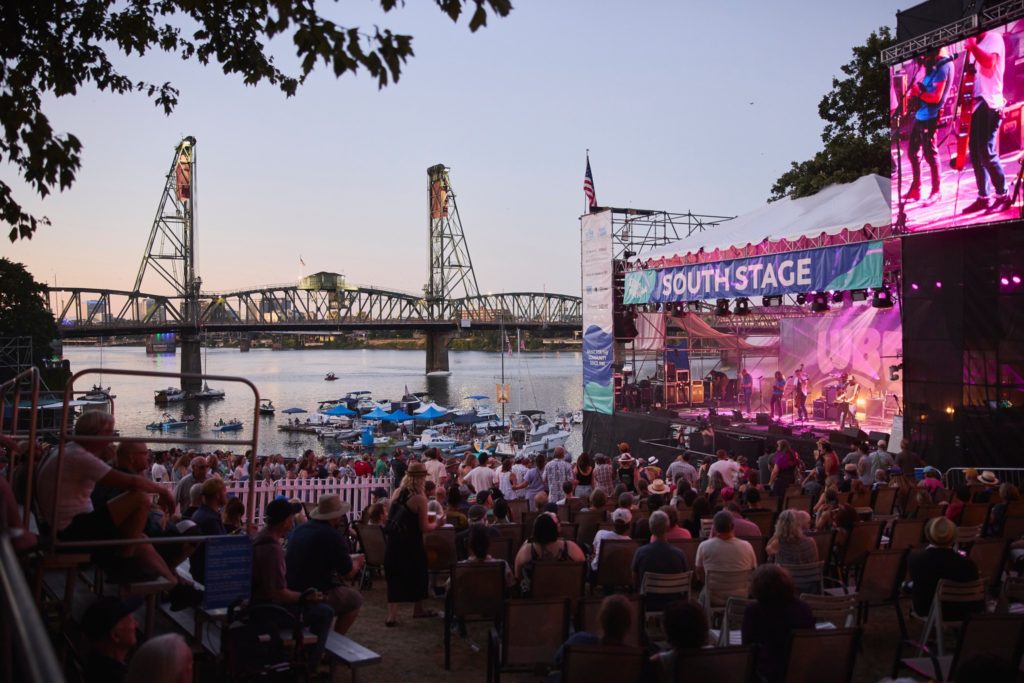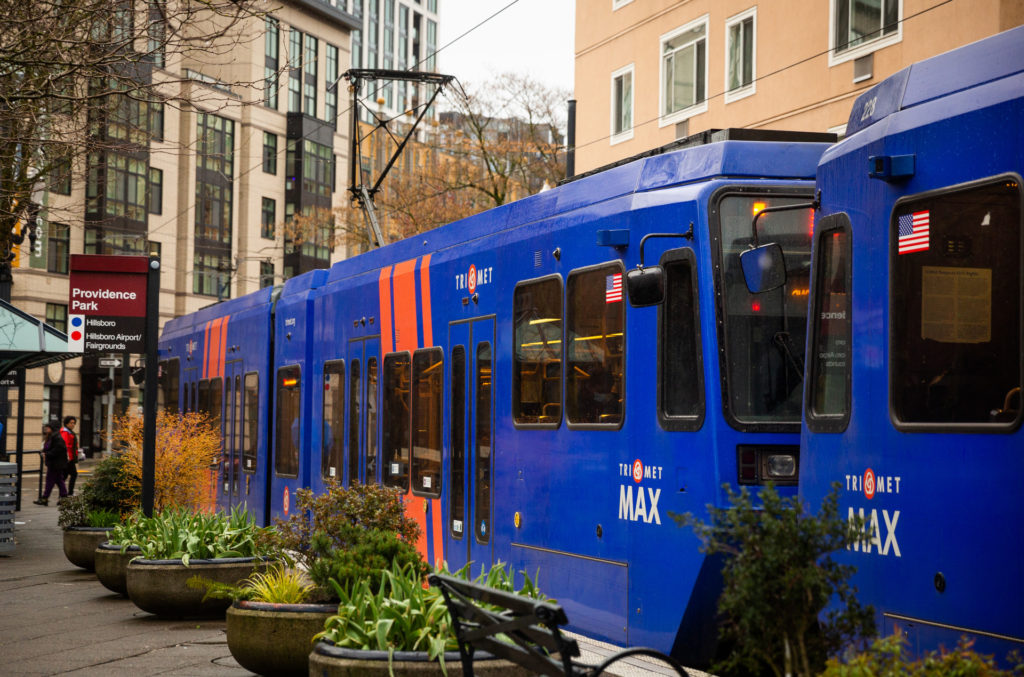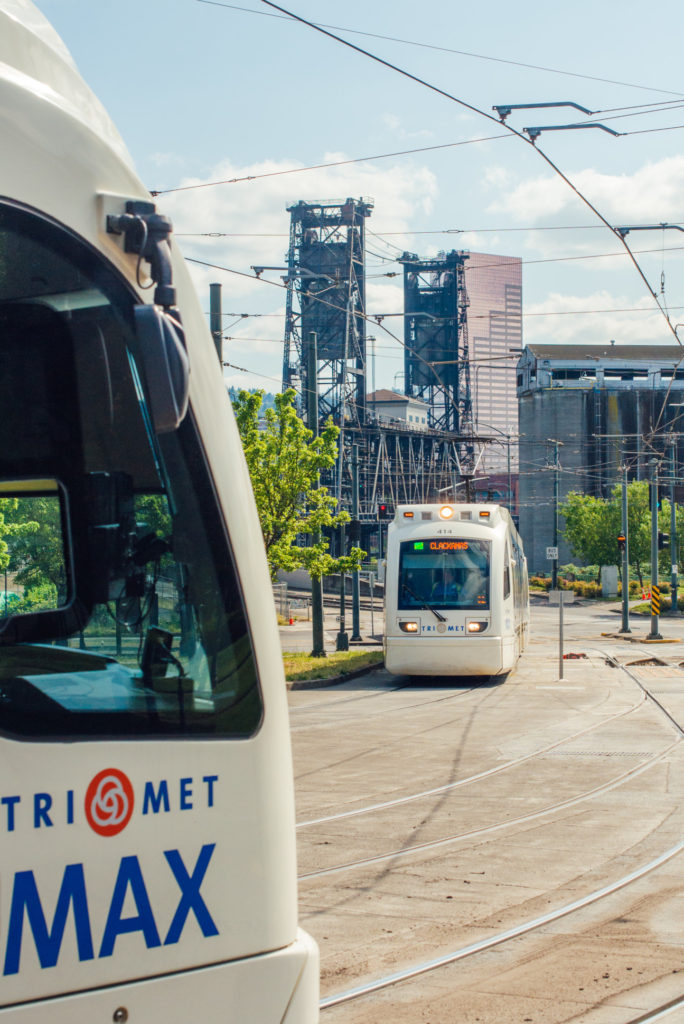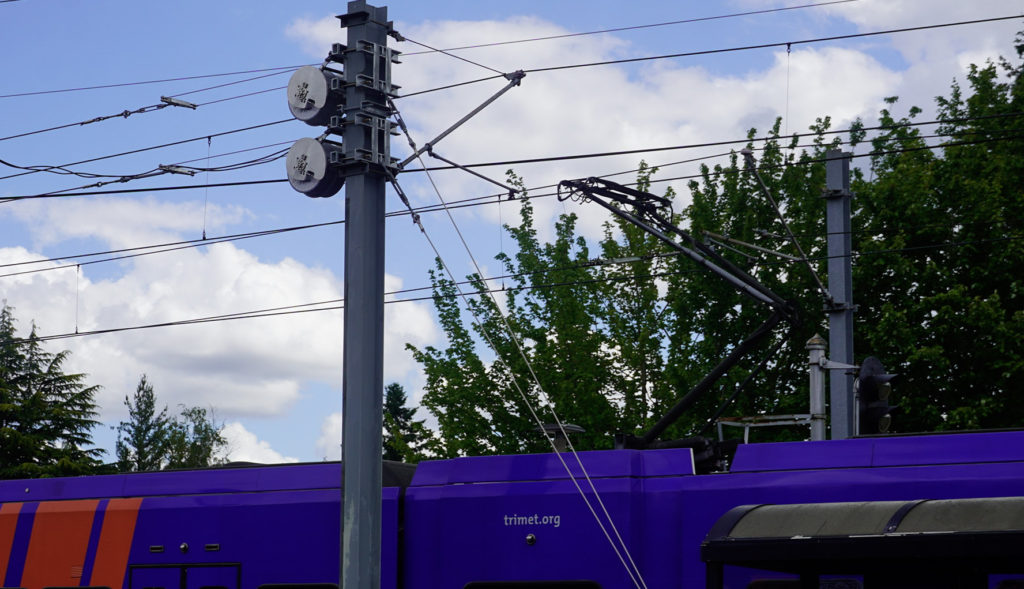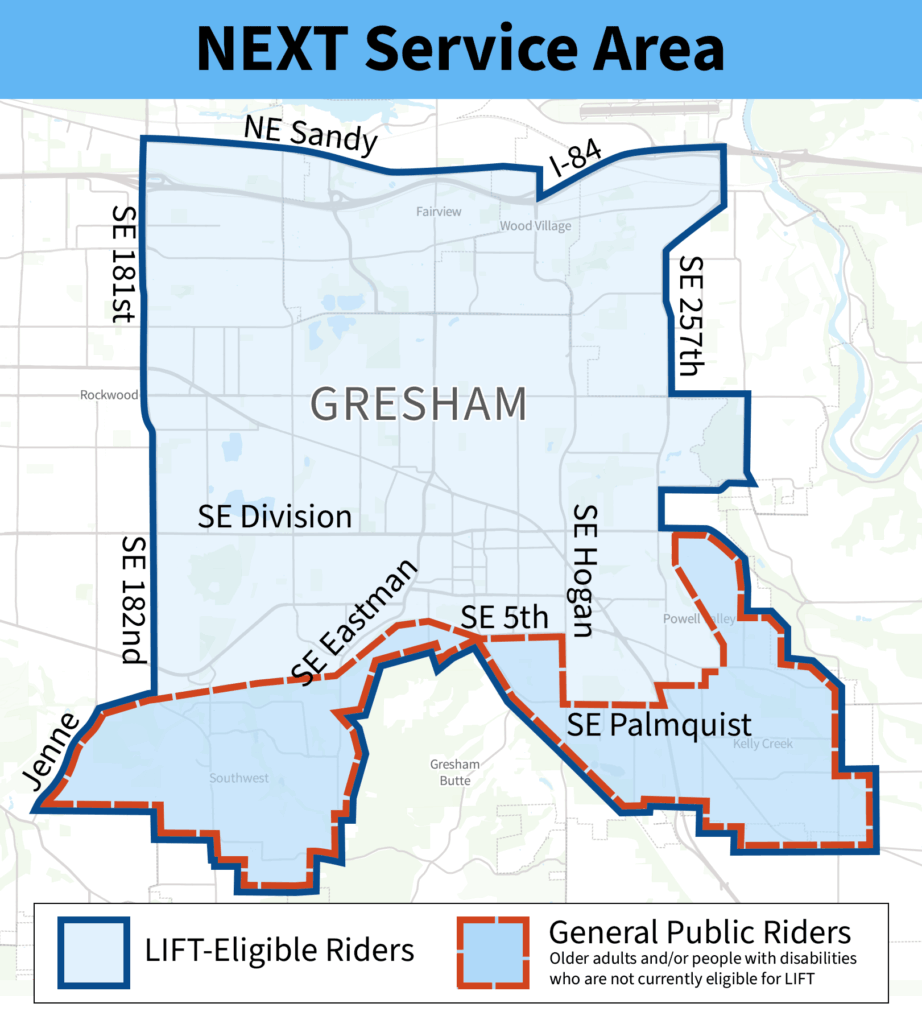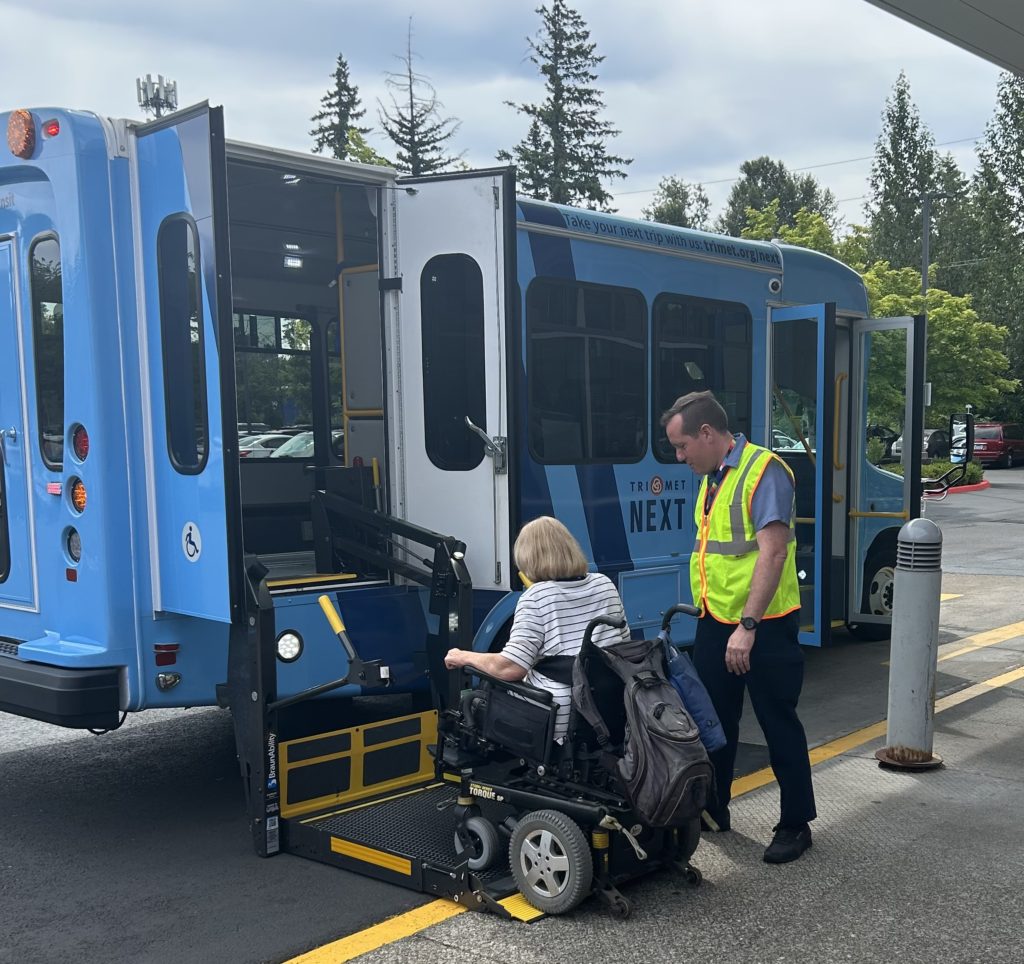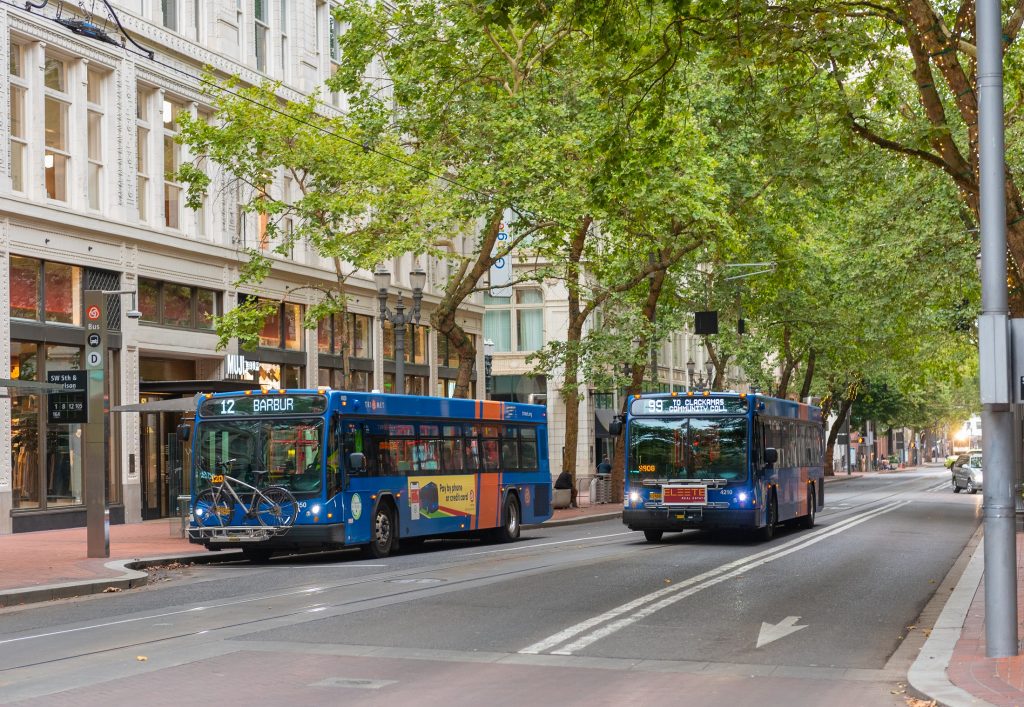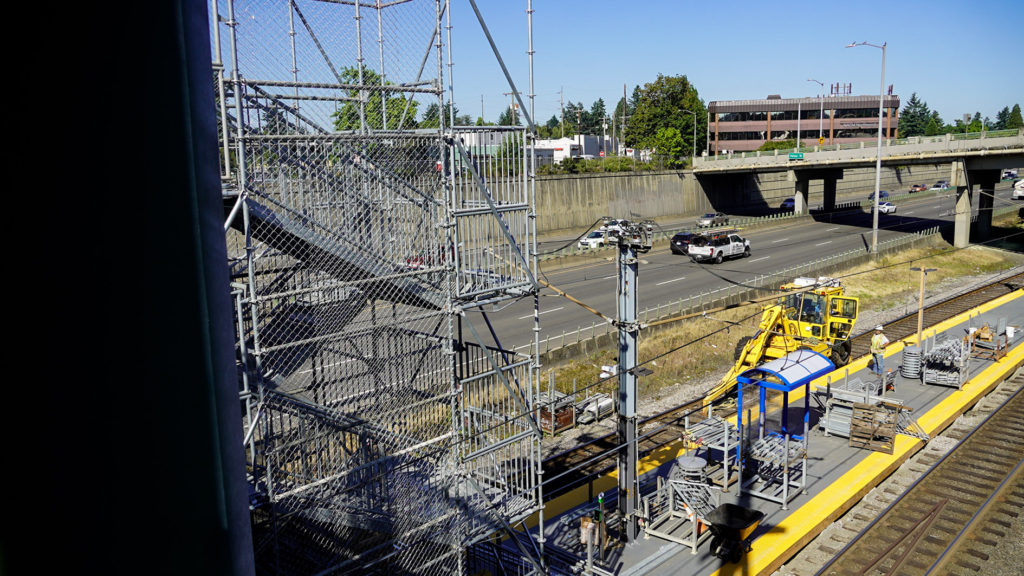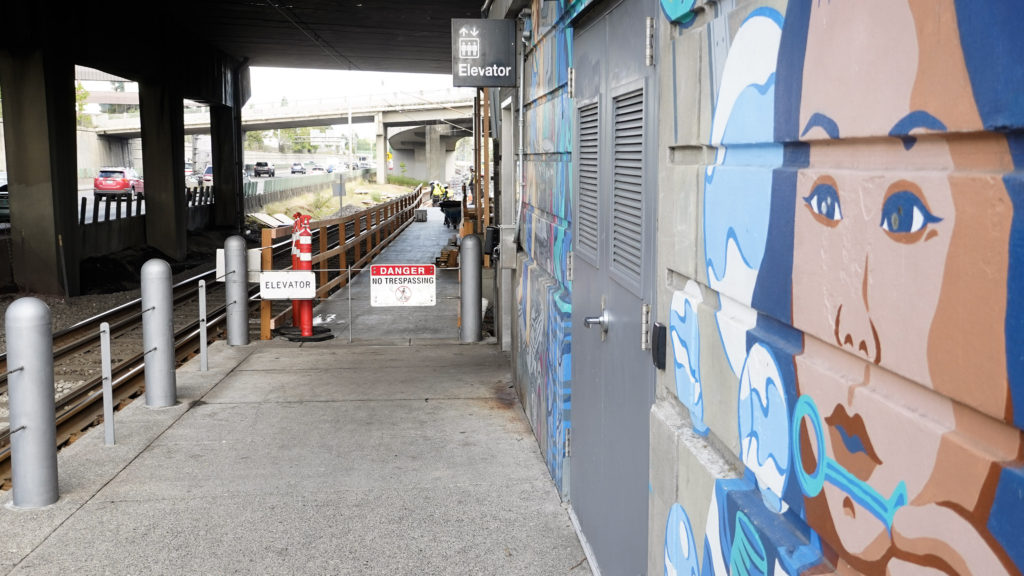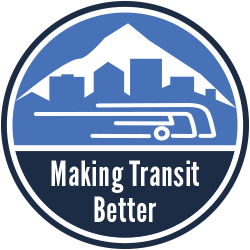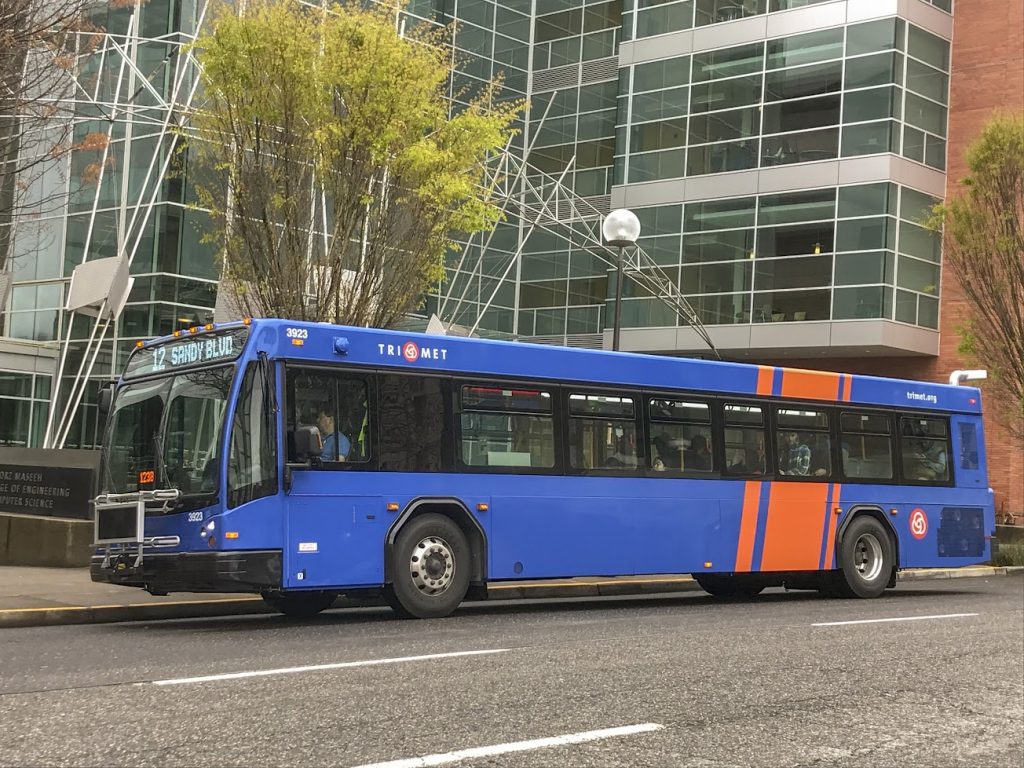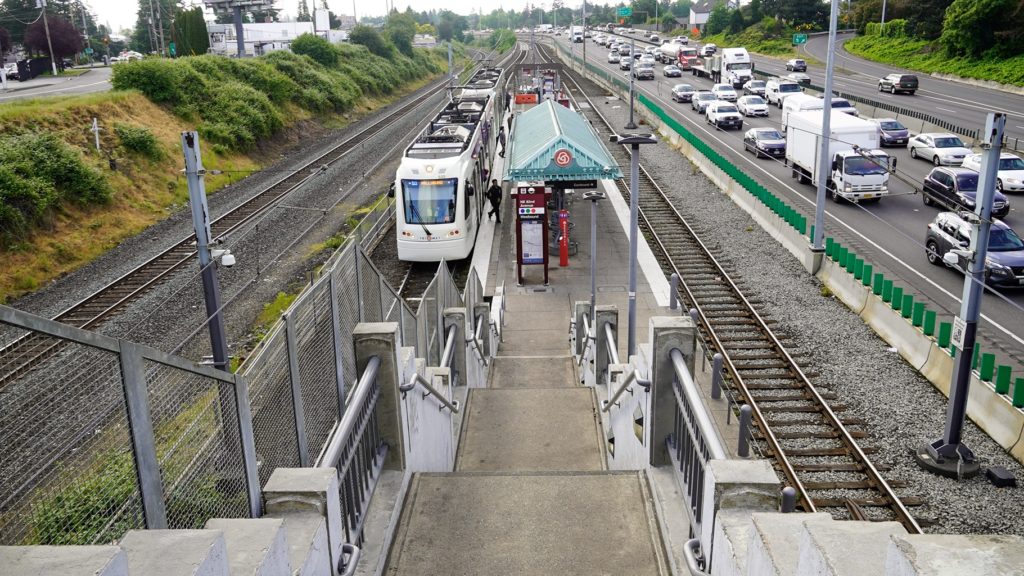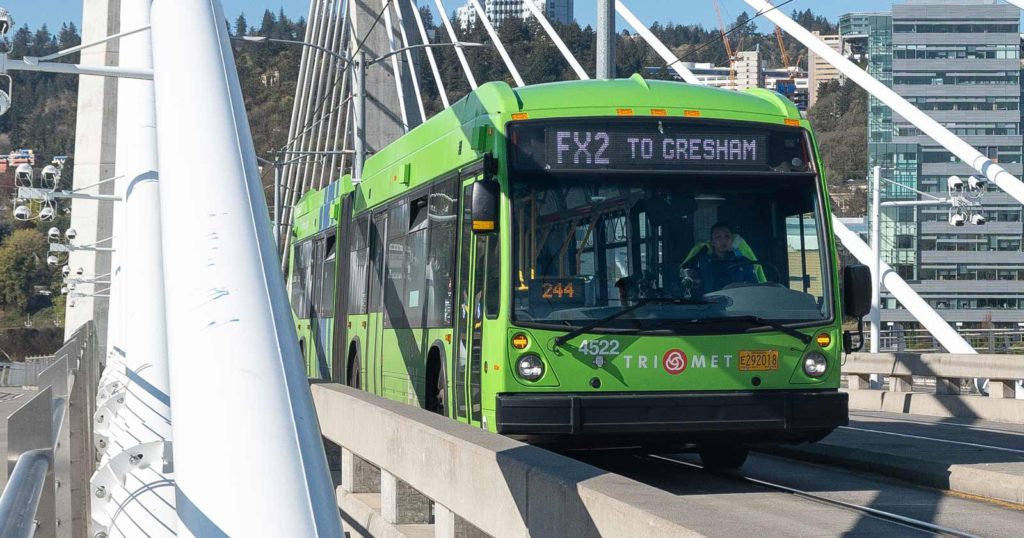TriMet’s pioneering light rail vehicle will find new life at the Oregon Electric Railway Museum
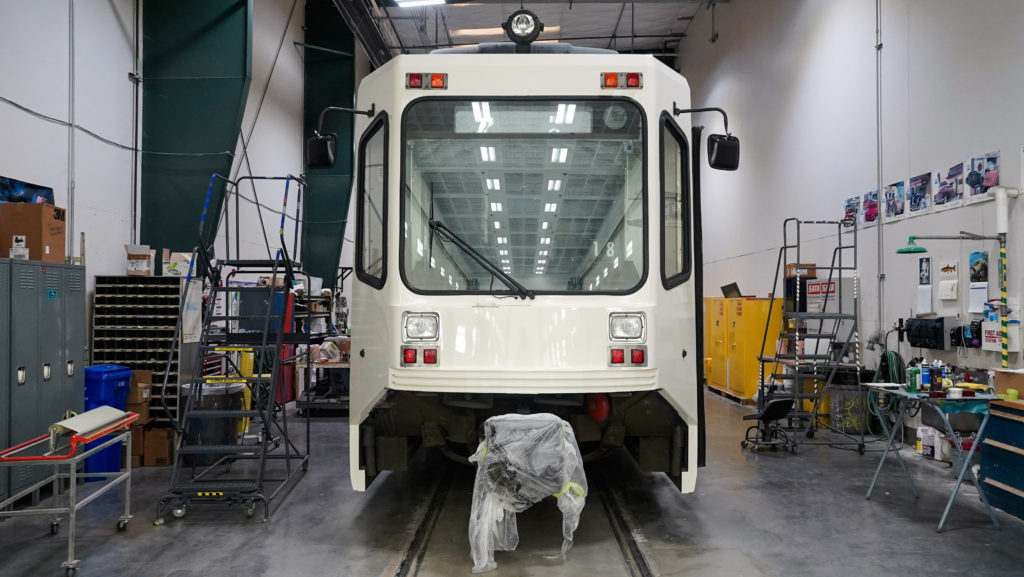
After more than 38 years of service and 2.2 million miles traveled, one of TriMet’s oldest MAX trains is nearing its next stop – retirement.
TriMet is donating Type 1 vehicle “101” to the Oregon Electric Railway Museum, a move that will preserve the first MAX train car ever manufactured. The vehicle will join the museum’s vast collection of electric trolleys and streetcars, but with a twist sure to delight TriMet diehards and rail fans across the state.
In recognition of the donation and the vehicle’s legacy, TriMet is bidding farewell to MAX car 101 at our Ruby Junction Rail Operating Facility on Tuesday, July 8. The car will be transported to the museum later this month. This ensures the MAX car remains in the Willamette Valley, available for in-person experiences. The museum is located in Brooks, Ore., about 38 miles south of Portland via Interstate 5.
The donation also comes with a special goal in mind: to keep the car running. That’s the long-term mission of the museum, which features a mile-long track that runs through its property. This ensures that a vital piece of Portland’s transit history continues to roll into the future!
Type 1s roll on through 2025
The donation comes as we phase out our fleet of Type 1s and introduce the new Type 6s, our most technologically advanced MAX trains yet. If you’re interested in catching a Type 1 before they disappear, you’re in luck. A few trains will continue serving riders through the start of 2026.
If you’re unsure about which type of MAX train you’re boarding, just look for the number at the top of the train. Another rule of thumb – if there are stairs, it’s a Type 1. Because the stairs make the Type 1s inaccessible to some, they are always coupled with either a Type 2 or Type 3 MAX car that has low floors.
Most Type 1s are being sent to Radius Recycling, where they’re being turned into materials like rebar that will be used for local construction projects. Preserving at least one of the cars will keep a vital piece of the state’s rail transit history in the region for generations to come.
“This is a great opportunity to give back to the community and ensure the legacy and history of light rail is recognized,” TriMet’s Project Manager for Vehicle Engineering Joe Taylor said. “The Type 1s were designed and built in 1983 and went into service in 1986. They have been a fantastic workhorse for the agency, and we are excited to partner with the Oregon Electric Railway Museum to preserve one for future generations.”
The donation fulfills a longstanding goal that has been more than 30 years in the making, museum leadership said
“This donation continues the story of Portland’s transit history at our museum for future generations to enjoy,” Oregon Electric Railway Heritage Society Secretary Mark Kavanagh said.
Showcasing public transportation
The Oregon Electric Railway Museum’s home is the 62-acre Powerland Heritage Park, a campus of 14 museums reflecting the preservation, restoration and operation of historic equipment. The museum has a collection of over 30 pieces, including streetcars, interurbans and electric freight locomotives, representing not just Portland but also other cities in the U.S., as well as Europe, Asia and Australia.
“As soon as the first Type 1 light rail vehicle started operation in 1986, we were making plans for the museum to acquire one upon retirement,” said Greg Bonn, the museum’s former director and son of its founder.
The museum plans to make modifications to its overhead trolley wire to allow the donated MAX car to operate. In the near term, the museum will display the vehicle near the museum’s trolley depot at Powerland Heritage Park during the Great Oregon Steam-up, scheduled for July 26-27 and August 2-3.
After Steam-up, it will be moved to the museum’s vehicle barn for occasional tours, where it will join two original 1904 Council Crest Portland Streetcars and the last streetcar purchased by the Portland Traction Company in 1932.
The museum is open on Saturdays in the summer months, along with special events with trolley rides. The Oregon Electric Railway Historical Society, an all-volunteer 501(c)3 non-profit corporation, also operates the Willamette Shore Trolley between Lake Oswego and Portland. For more about the museum, visit: museum.oregontrolley.com
At a Glance
TriMet’s Type 1 trains
You may have noticed, TriMet’s original trains are unlike any in our fleet. Here are a few examples of what make the Type 1s standout as the distinctive trains that they are.
- They had a different manufacturer than the rest of TriMet’s MAX fleet. The Type 1s were built by Bombardier, while all the others were built by Siemens.
- The Type 1’s boxy design is reminiscent of Belgian trains manufactured by BN Constructions Ferroviaires et Métalliques, some of which are also displayed at the Oregon Electric Railway Museum. Bombardier modified an existing BN design for the Type 1s as part of a joint venture between the two companies.
- The Type 1s are notable for having high floors and stairs. Before the passage of the Americans with Disabilities Act in 1990 and later the introduction of low-floor trains i, TriMet used devices at our stations that lifted people in mobility devices onto trains with the operator’s assistance.
- The Type 1s have more seating than any other MAX train.
- The Type 1s were completely analog. Even the destination displays had to be cranked by hand!

